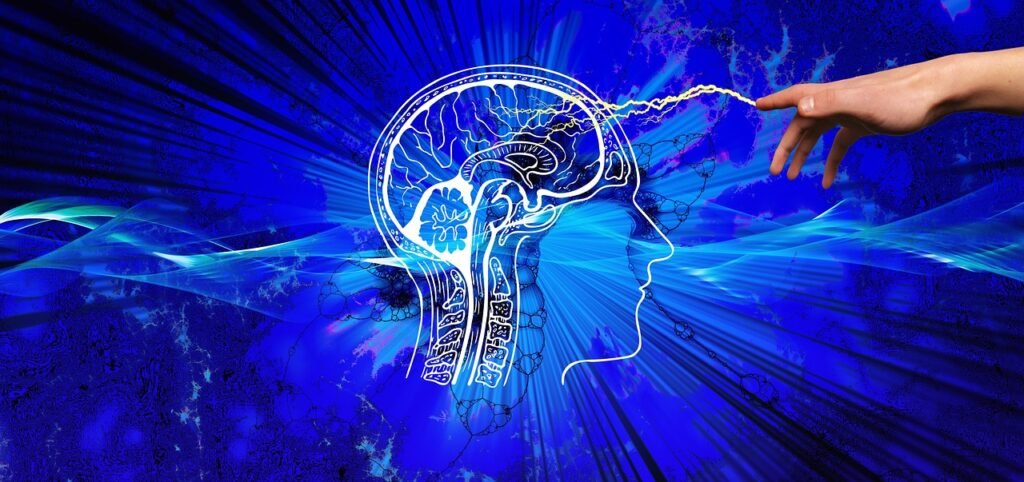There’s something amazing about the human brain: it’s either a world-class sprinter or a slow-motion philosopher. Daniel Kahneman calls these two extremes “System 1” and “System 2.” One’s like that friend who finishes your sentences and always answers first, while the other has a habit of showing up late with a lot of wise opinions—especially about why that sentence was better left unfinished.
If you’ve ever had one of those knee-jerk reactions you later regretted, congratulations. That was System 1, a mental speed demon that’s quick but sloppy. System 2? It’s the friend you call when you’re trying to decide if you should actually text your ex. Let’s break down these two systems, why they matter, and how understanding them can keep you from metaphorically tripping over your own thoughts.
System 1: The Fast and the Hilariously Wrong
System 1 is your brain’s default mode. Fast. Intuitive. Effortless. It’s the reason you can tell when someone’s angry without asking them, and it’s why you know a scream in the distance is something you should pay attention to (unless you’re in a horror movie, in which case, congrats—you’re next).
This quick-thinking System 1 is fantastic at filling in blanks with what feels like absolute certainty. Trouble is, it’s basically a professional guesser. It loves to rely on little mental shortcuts, known as heuristics. Here’s how that looks in the wild:
- Availability Heuristic: Ever hear about a plane crash and suddenly feel like air travel’s the worst idea ever? That’s System 1, highlighting the one time something goes wrong and ignoring the millions of flights that land just fine.
- Anchoring Bias: Say you see a car priced at $25,000, then a similar one for $30,000. That first price anchors you, making the second seem outrageously high—even if it’s fair. It’s like meeting your partner’s ex: suddenly, every little thing has a weird comparison attached.
- Halo Effect: System 1 decides if one thing’s good, everything else about it must be too. Like a handsome stranger who seems charming—until he talks politics.
In a nutshell, System 1 is fast, usually accurate on surface stuff, but gets hilariously misguided once things get complicated. And the best part? It’s 100% convinced of its genius every single time.
System 2: Slow, Steady, and Only Sometimes Sane
Enter System 2, the wise old soul that would rather sit back and actually think. System 2 is deliberate. It takes its time, weighs options, and occasionally rolls its eyes at System 1’s antics. It’s the one that looks at that pricey coffee and thinks, “Do I really need this?”—even if it still buys it half the time.
System 2 doesn’t come naturally to us because, frankly, it’s exhausting. It’s like climbing stairs instead of taking the escalator. But for tasks that matter, it’s a savior. When System 1 misfires, System 2 picks up the slack…if it feels like it.
Here’s where System 2 gets its reputation as the brain’s wise elder:
- Rule-Based Thinking: System 2 can follow the rules, compare things rationally, and look at probabilities instead of gut feelings. Not that it always does, but it can.
- Delayed Gratification: It’s the one that resists eating the whole pizza, even though the heart—and stomach—wants it. It’s why long-term planning exists. Not that we’re great at it, but hey, there’s effort.
But the kicker? System 2’s laziness. It’d rather let System 1 take the wheel and only steps in when forced. It’s like a supervisor who waits until there’s a crisis before intervening. So when System 1 is taking a nap or overthinking things, System 2 might finally get off the couch and really think.

How These Systems Interact—Or Don’t
Now, here’s where things get fun (or, well, disastrous). These systems don’t always get along. System 1 often jumps to conclusions, and System 2 occasionally steps in, rolls up its sleeves, and tries to save the day. But don’t hold your breath—System 2 is more like a backup generator. It’s there, but it only kicks in under pressure.
We’re usually oblivious to which system is in charge. Cognitive ease—when things just feel smooth and easy—tends to lull us into trusting System 1, even if it’s just stringing ideas together like a hyperactive conspiracy theorist. Good mood? Smooth sailing? We’re at the mercy of System 1, which, as Kahneman points out, can be a recipe for disaster.
Think about it: you’re on a date, they’re funny, they’re charming…that’s System 1 taking mental notes and humming happily. System 2, meanwhile, is like, “Shouldn’t we, I don’t know, maybe fact-check some of this?” And by the time you’ve taken the leap, System 1 is on vacation while System 2 cleans up the mess.
System 1’s Greatest Hits: Biases and Why They’re a Riot
If System 1 were a band, its greatest hits would be all the ways it biases our thinking. Here’s the lineup:
- Halo Effect: One good quality makes you assume everything’s golden. Basically, “nice guy” equals “perfect guy.” Not always.
- Framing Effect: Say I offer you a “95% success rate” instead of saying there’s a “5% failure rate.” Exact same deal, totally different vibe. System 1 is so susceptible to framing, it’s almost cute.
- Anchoring: Want to guess how many jelly beans in the jar? I’ll throw a number out, like 500, and suddenly, you’re thinking around that number—even though I just made it up. Anchoring can nudge you to think in ways you’d otherwise never consider.
- Loss Aversion: Losing feels worse than winning feels good. Drop ten bucks? Tragic. Find ten? Meh. Kahneman points out that we’ll jump through hoops to avoid losses more than to win.
These biases lead us to all kinds of irrational choices—from blowing cash on unnecessary things to falling headfirst into commitments we’re not ready for.

How to Outsmart Your Brain (Good Luck)
Sure, System 1 is quick and dirty, but we’re not totally helpless. Here’s a handful of ways to tip the scales back to System 2, especially when you’re about to make a decision that actually matters.
- Pause and Check: Before jumping into action, take a beat. It’s like stopping to smell the roses, except you’re just smelling your own rash decision-making.
- Ask “Why?” Twice: Whenever you’re convinced something is true, ask yourself why twice. If System 1 doesn’t have an answer, System 2 might wake up.
- Use Numbers, Not Vibes: System 2 loves stats and hates your “feelings.” If you’re facing a big decision, try looking at data instead of letting System 1 improvise. Stats may sound dull, but they’re great for keeping System 1’s theatrics in check.
- Prime Your Thinking: Know those “priming” tricks marketers use? Use them on yourself. Tell yourself you’re looking for facts, not impressions. Give System 2 a heads-up to stay vigilant.
- Expect Less “Instant Gratification”: System 1 will scream for it. Resist it. System 2 is all about waiting a beat, taking it slow, and, frankly, doing what’s best for the long haul.
The Brain, It’s a Circus Up There
Kahneman’s big lesson? We’re all caught between a trigger-happy System 1 and a painfully rational System 2. And no one’s immune, not even the smartest folks in the room. The brilliance of Thinking, Fast and Slow is that it’s not just an analysis of “the mind” but a breakdown of how we each bring our own brand of crazy to everyday life.
Our brains don’t come with a manual. But with a little help from System 2 (when it can be bothered), we might just avoid the worst of System 1’s stunts. And let’s face it—that’s probably the best we can hope for.
There you have it, a blueprint of your brain’s best and worst instincts. Go ahead, let System 1 keep life interesting, and keep System 2 around for damage control. Because if life’s taught us anything, it’s this: you’re only as good as your next questionable decision.
